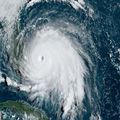Kingarabian wrote:Nuno wrote:Kingarabian wrote:Significant reduction of airline flights has to be playing a huge role.
I keep seeing this mentioned but it isn't as if planes worldwide are grounded. There are still tons of flights circling around. The lack of GIV flights on the other hand seems to be a major factor.
G-IV are usually flown for threatening systems. Worldwide, even though there is some air travel returning, airline flights have been significantly reduced due to COVID. If it's not that, then maybe satellite assimilation errors? We won't know until after this season is over and the ECMWF/NWS release more information.
I remember seeing some articles about 5G being on the same frequency as weather satellites and possibly interfering with some satellite measurements.
https://www.nature.com/articles/d41586-019-03609-x
Water vapour in the atmosphere naturally produces a weak signal at this frequency, which satellites use to measure humidity. Those data feed into weather forecasts. But if a 5G station is transmitting a signal near the 23.8-gigahertz frequency, a weather satellite might pick it up and interpret it as water vapour.
Though I imagine if that was at play that we'd see the models over-forecasting systems, not failing to pick them up or failing to intensify, but food for thought nonetheless. But on that,
Shell Mound wrote:Based on visible loops, there appear to be two or even three LLCs: one near St. Martin, another east of Antigua, and maybe a third farther ESE.
All three LLCs appear to be part of one sprawling surface trough: essentially eddies within a broader circulation heading generally westward.
https://twitter.com/AnthonyMweather/status/1296907337018609664
If Laura does intensify more, would this explain why the models are having such a difficult time, and could this assist with center reformation should it go over land?











